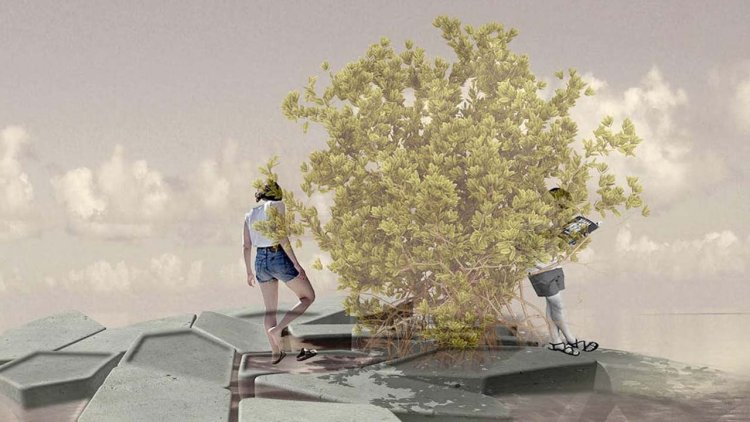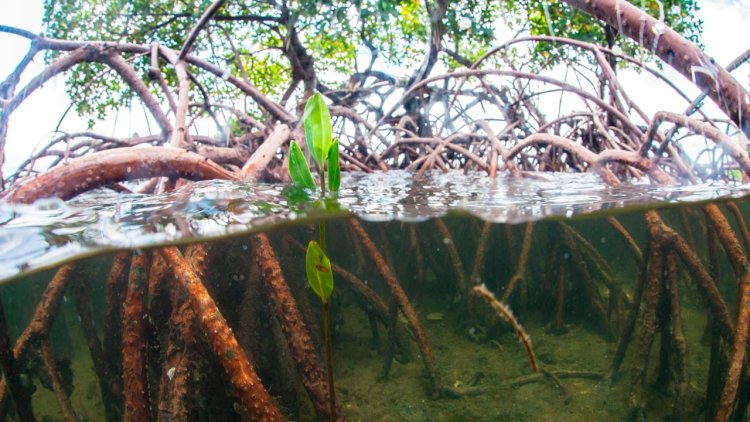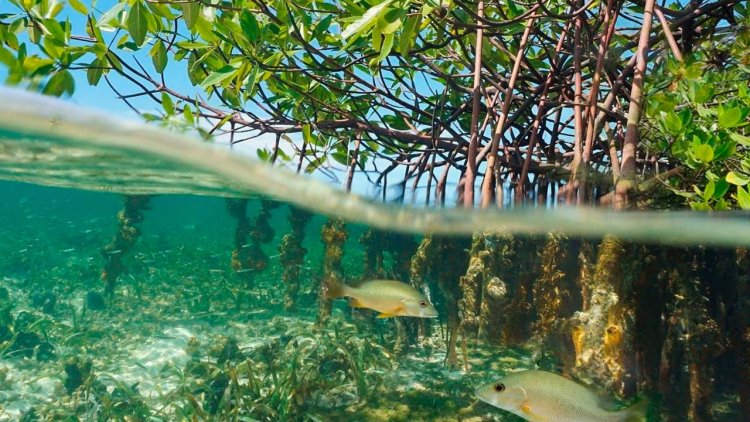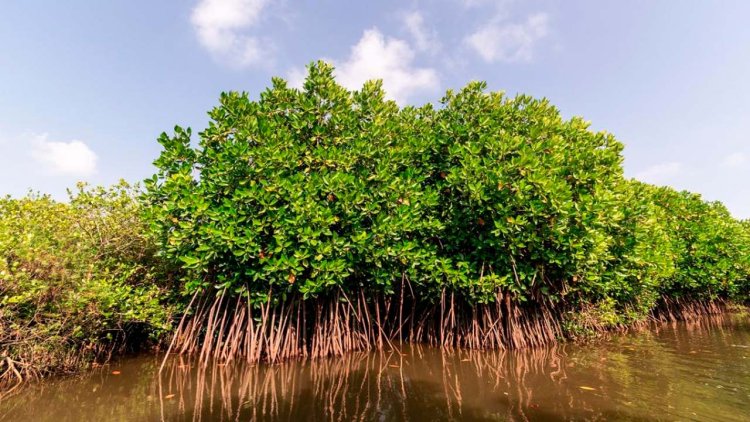Ocean forests: How 'floating' mangroves could provide a broad range of ecological and social benefits
Were it possible, to have mangroves grow on the oceans, floating on top, then they could theoretically sequester large amounts of carbon while also help rebuilding food, fisheries, and restore natural blue carbon ecosystems.

The 2022 report "The State of the World's Mangroves" estimates that since 1996, 5,245 square kilometers of mangroves have been lost due to human activities such as agriculture, logging, tourism development, coastal aquaculture and climate change, and that only 147,000 km2 remain.
It is a well-known fact that mangrove forests are among the most productive marine ecosystems in the world, located at the very start of the marine food web (the productivity of biomass by plants is called primary productivity). They serve as a natural nursery for fish and also provide protection against coastal erosion.
One of the primary causes of mangrove forests' decline is illegal logging for timber and charcoal production, which had caused thousands of square kilometers of mangroves to disappear. This process needs to not just be stopped, but also reversed, and urgently. All mangrove forests need to be conserved and restored if we are to achieve the United Nations' Sustainable Development Goals, in particular SDG 14, life below water; SDG 15, life on land; and SDG 7, affordable and clean energy, in the context of accelerating climate change.
At the same time, wood offers a renewable alternative to fossil fuels such as coal, oil and gas, which are the leading drivers of climate change. Wood is also a safe raw material, as it's fully recyclable. So how can we balance these two urgent needs?
One idea being tested is the feasibility of forests floating on the ocean.

Floating forests
In the natural environment, mangroves are restricted to tropical and some sub-tropical inter-tidal zones, with minimal wave exposure: at low tide, they're exposed to oxygen, and at high tide, they get moisture from the sea. They do not grow on dry land, nor in areas that are permanently covered by ocean water. These restrictions leave just a narrow ecological niche where they can thrive.
But what if mangroves could float? If so, the narrow range that is now suitable for them could be significantly widened to include vast stretches of ocean surface.
Were it possible, to have mangroves grow on the oceans, floating on top, then they could theoretically sequester large amounts of carbon while also help rebuilding food, fisheries, and restore natural blue carbon ecosystems. Compared with terrestrial forests, they could have large and long-lasting carbon-sequestration capacities.
In a natural environment, some mangrove-species require regular exposure to both fresh water and salt water. However, species such as Avicennia marina and Rhizophora mucronata can tolerate full-strength seawater during their entire life cycle. In a 2014 study, "Floating mangroves: The solution to reduce atmospheric carbon levels and land-based marine pollution?", we provided evidence that they could be grown on top of the ocean, without the need for fresh-water irrigation, pumping or drainage, all of which would consume energy.
Floating mangroves have been tested at an experimental site, for the sake of greening a floating boat jetty. To better understand their larger-scale development, we need to find out more about energy, mooring, and transport requirements, financial feasibility and maintenance cost. Other important issues include the design of the structures on which the mangrove forests would grow and the materials used—recycled ocean plastic debris is one option.
Data are expected to be provided by the University of New South Wales, in an upcoming study that will be carried out in the Pacific Ocean.
Floating mangrove plantations wouldn't replace shoreline forests, but would serve to reduce resource pressures on them. Coastal management that integrates floating plantations with shore-based mangroves would strengthen ecosystem services. Further, design and location of the "pontoons"—the containers on which the mangroves grow and float—would offer additional wave attenuation and a measure of coastal protection.

Clean energy, sequestered carbon
Seawater-based trees could function as a new and clean source of energy, improve ecosystems services and livelihoods for coastal communities as decentralized energy supply as well as for the sequestration of atmospheric carbon. In addition to the 2014 study, additional research was carried out by Ashley (2019), and Kiran (2022).
The development of a prototype and further tests are necessary, jointly with some basic research, to develop this promising technology to obtain science-based data and knowledge before potentially developing this further for wider and possibly profitable applicability, that can be useful for the production of biofuel.
Discussions on the need for scientific research are ongoing between UNESCO, the UNSW in Sydney, the AIT in Bangkok, and Leibniz Centre for Tropical Marine Research (ZMT) in Bremen, to demonstrate that this new system for the production of seawater-based trees, can function as a new and clean source of energy, improve ecosystems services and livelihoods for coastal communities, as well as for the sequestration of atmospheric carbon.

More data needed
A key question for the realization of the floating mangrove concept is how much biomass could be produced and used in the form of wood energy? Global needs are growing, as highlighted by a presentation given in January 2023 Blue Carbon Forum in Yokohama, Japan. In 2021, the global wood chips market stood at $8.8 billion and is expected to grow to $13.1 billion by 2027. Over the same period, the global charcoal market will grow from $5 billion to around $7 billion by 2027.
It's also essential to know how much carbon could be sequestered. Other important questions include investment costs, design, materials, protection against high-energy waves and wind, as well as potential profitability. There is strong evidence that this innovative system would work, however, further development is merited to find robust answers to these and other questions.
Source: The Conversation



























